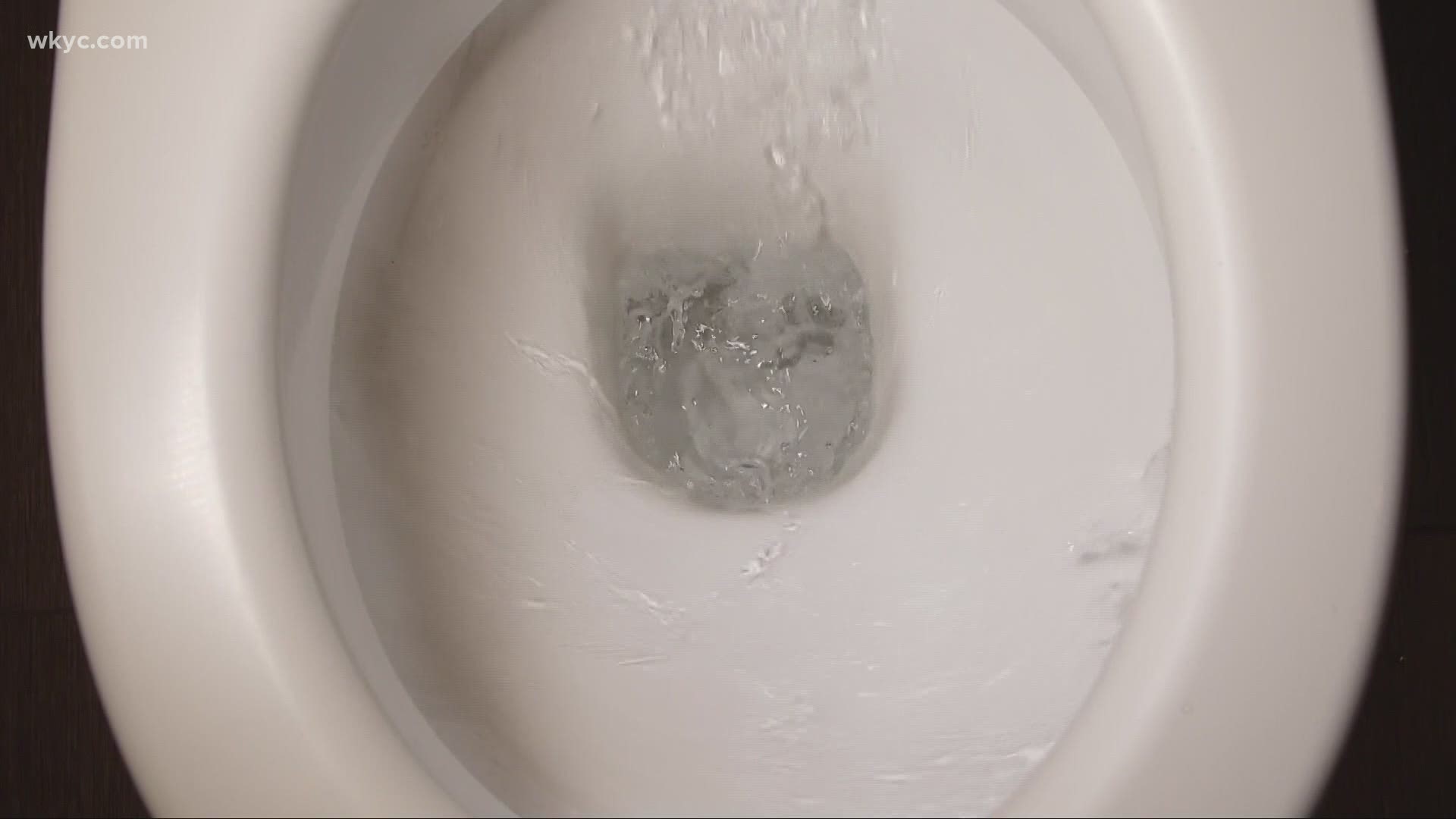CLEVELAND — The Ohio Department of Health notified local health department officials that an additional spike in coronavirus cases could be on the way in Cuyahoga County. The prediction is based on increased levels of the virus detected in wastewater.
Wastewater samples are collected at facilities around the state and sent to the Ohio Department of Health for Analysis. Three of those treatment plants are managed by the Northeast Ohio Regional Sewer District (NEORSD) – Westerly, Easterly, and Southerly. The higher levels that lead to the warning were found at Westerly and Easterly which include wastewater sheds that cover a large portion northern Cuyahoga County.
“Wastewater was identified as a potential way to track the COVID virus and the prevalence in the community,” said Scott Broski, Superintendent of Environmental Services for the NEORSD. “By testing the wastewater at one of our plants, we’re able to test that entire sewer shed in one sample as opposed to trying to sample or test everyone living in that sewer shed," Broski explains.
It’s been shown that people tend to shed the virus in their waste before showing symptoms of the virus. For that reason, wastewater can be a good indicator of what to expect in future positive test results.
“People that become infected with the COVID virus start shedding the virus 7-10 days ahead of actually maybe becoming sick,” says Broski. “We can look at the increase and decreases and kind of predict what’s going to happen with illnesses in the community.”
NEORSD is already required to take samples of and test wastewater for a number of reasons, including EPA compliance. For coronavirus testing, a small amount of those same samples are sent to a third party labs chosen by the state.
One of those labs is at Kent State University. KSU plans to implement its own wastewater testing program on campus in the new year whenever students return to campus. Samples will be taken by devices placed in manholes near dorms.
It’s actually not people physically taking out waste. There’s a system setup that has been linked to a microbiology lab,” said Manfred van Dulmen, Interim Associate Provost at Kent State University. “They will look at viral loads in these outlets. So there will be five different ones in the residence hall areas.”
Using data collected by the lab, health officials are able to make calculated decisions about how to manage the virus.
“If we learn there is increased viral load in one area, our health officials, for example, could recommend all students in those residence halls are tested,” said van Dulmen. “What wastewater does is it gives you an early indication of disease spread in a community or an area.”
While there’s no guarantee increased virus levels in wastewater will lead to a spike, the correlation between the two has been close enough for scientists to add the data to the set of surveillance tools at their disposal.
Broski says, “they kind of move together, the wastewater a little in advance of the daily counts.”

